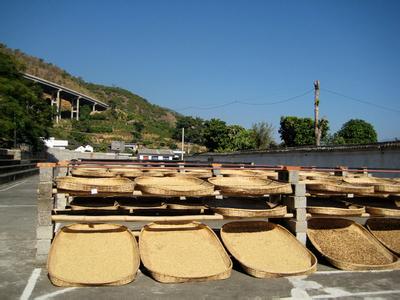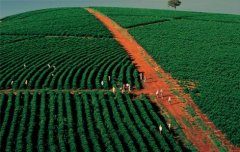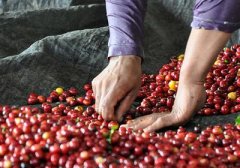Nicaragua, the poorest country in Central America, cultivation of coffee on the estate Climate Altitude

Among them, in Costa Rica, where the government strictly controls the use of water, coffee farmers have created honey treatments named to retain "different thickness of flesh", including yellow honey (yellow honey) and red honey (red honey), which have the thinnest pulp layer, and black honey (black honey), the famous owner of the former Costa Rican COE champion La Brumas de Zurqui. Traditionally, Nicaraguan coffee is mainly washed with water, but because the trend of "honey treatment" has become popular in China and the United States in recent years, some batches are "tailor-made" at the request of buyers.
High-quality Nicaraguan coffee is also grown in the northern and central highlands of the country. The best coffee is produced in Matagalpa. The coffee produced here is highly respected by coffee lovers all over the world and gradually valued by the boutique community. Abundant precipitation, suitable temperature, high altitude, fertile soil and unique planting ecology are the prerequisites for creating high-quality Nicaraguan coffee.
Nicaragua is an economically backward agricultural country, is one of the poorest countries in Central America, the unemployment rate is very high, people live in poverty, and coffee is Nicaragua's pillar industry, producing nearly 100,000 tons of coffee beans every year. Due to the poor economic foundation, the coffee industry is still relatively backward, and coffee farmers are also in a relatively poor state.
Some of the fruits that stand out from the classifier are transported to the depulper for peeling and pulp. The so-called "honey-treated" coffee (honeyprocess) describes coffee as sweet as honey, not really processed with honey. The coffee kernel which has been peeled but still adheres to the pulp is directly dried, and some fructose will be absorbed by the core. This method has different names in different countries, such as pulped natural, semi washed and so on.
Important Notice :
前街咖啡 FrontStreet Coffee has moved to new addredd:
FrontStreet Coffee Address: 315,Donghua East Road,GuangZhou
Tel:020 38364473
- Prev

Nicaragua's best coffee growing region Linas Manor Coffee Flavor Taste Aroma Description
Although Nicaragua is a large country in Central America, it is not a big producer of coffee in the world. Compared with its neighbor Costa Rica, its production and reputation are much weaker. However, Nicaragua coffee of high quality ranks among the top coffee beans in the world and enjoys a reputation. The ideal planting conditions for coffee trees are: temperature between 15 degrees and 25 degrees, and
- Next

Nicaragua Linas Estate Fine Coffee Bean Origin History Development Culture Introduction
The volcanic ash and shady cultivation produce high-quality Nicaragua coffee with a mild, mild, slightly acidic flavor. Nicaragua coffee is the largest of all coffee beans, and MADRIZ is located in the mountains of northern Nicaragua, adjacent to Nueva Segovia,Jinotega and Esteli. This area is quiet and elegant, with the famous Somoto
Related
- Does Rose Summer choose Blue, Green or Red? Detailed explanation of Rose Summer Coffee plots and Classification in Panamanian Jade Manor
- What is the difference between the origin, producing area, processing plant, cooperative and manor of coffee beans?
- How fine does the espresso powder fit? how to grind the espresso?
- Sca coffee roasting degree color card coffee roasting degree 8 roasting color values what do you mean?
- The practice of lattes: how to make lattes at home
- Introduction to Indonesian Fine Coffee beans-- Java Coffee producing area of Indonesian Arabica Coffee
- How much will the flavor of light and medium roasted rose summer be expressed? What baking level is rose summer suitable for?
- Introduction to the characteristics of washing, sun-drying or wet-planing coffee commonly used in Mantenin, Indonesia
- Price characteristics of Arabica Coffee Bean Starbucks introduction to Manning Coffee Bean Taste producing area Variety Manor
- What is the authentic Yega flavor? What are the flavor characteristics of the really excellent Yejasuffi coffee beans?

